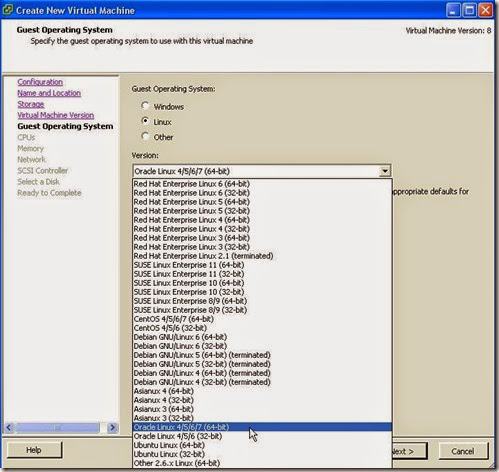Vmware Esxi 5.5 Support
Introduction This document describes how to upgrade the Elastic Sky X Integrated (ESXi) hypervisor from version 5.5 to 6.x via Command Line Interface (CLI). ESXi is one of the hypervisor preferred by the customers in virtualization and is also the preferred hypervisor by Cisco for multiple platforms that include all Unified Communications infrastructure, SourceFire and several other servers that run on top of a virtualized environment.
Prerequisites Requirements Cisco recommends that you have knowledge of these topics: • Unified Computing System (UCS) with VMware ESXi hypervisor version 5.5 • Terminal access to ESXi hypervisor • Access to Cisco Integrated Management Controller (CIMC) web page on a java-enabled browser Components Used The information in this document is based on these software and hardware versions: • Unified Computing System C460. • ESXi hypervisor version 5.5. • Firefox browser. The information in this document was created from the devices in a specific lab environment. All of the devices used in this document started with a cleared (default) configuration.
Vmware Esxi 5.5 Support Number

If your network is live, make sure that you understand the potential impact of any command. Background Information VMware published the deadlines for the End of General Support and End of Technical Guidance for ESXi 5.5: It is a good practice to upgrade the virtualized infrastructure to ESXi 6.0 and 6.5.
Overview: vSphere CLI for vSphere 5.5. The vSphere Command-Line Interface (vSphere CLI) command set allows you to run common system administration commands against ESX/ESXi systems from any machine with network access to those systems. IBM's technical support resource for all IBM products and services including downloads, fixes, drivers, APARs, product documentation, Redbooks, whitepapers and technotes. VMware vSphere Hypervisor (ESXi) 5.5 U1 v1 with IBM Customization - IBM Systems and Lenovo x86 Server - IBM Support. • VMware ESXi/ESX Server 3.0 and later • VMware Workstation 6.0 and later • VMware Fusion 2.0 and later • VMware ACE 2.0 and later • VMware Server 2.0 and later VMware Certification and Support Levels VMware product support for operating system releases can vary depending upon the specific VMware product release or update and can also. Login to My VMware to download products, manage product license keys, get support and file support request.
Configure Upgrade process via CLI: Step 1. Shutdown the virtual machines (VMs) that run on the ESXi server to be upgraded. Place the ESXi server in Maintenance Mode. This helps turn off any critical service that the hypervisor runs and allows the server to upgrade. You can use vSphere Client: Or CLI. In order to do so, run the command: vim-cmd /hostsvc/maintenance_mode_enter Step 3. Modify ESXi firewall to allow outgoing Hyper Text Transfer Protocol (HTTP) connections.
Since the VMware servers will be queried for the actual upgrade file, HTTP(S) outgoing connections from the ESXi server must be allowed. You can use vSphere Client: Or CLI. IN order to do so, run the command: esxcli network firewall ruleset set -e true -r httpClient Step 4. Query VMware servers for the upgrade versions available.
Now all upgradeable versions can be listed to determine which one will be used, to do this, run the command: esxcli software sources profile list -d grep ESXi-6 This lists all the upgradeable versions. The no-tools version can select in case the upgrade of the vmware tools is not required, otherwise, the standard upgrade version can be used. Select the version to upgrade and start the upgrade process.
Once the exact version to upgrade is decided, the upgrade process can start with the command: esxcli software profile update -d -p ESXi-6.0.0-1-standard Step 6. Reboot the server. After the upgrade process completes, a reboot of the server is required for the new version to take effect. Run the command: reboot Step 7. Exit Maintenance Mode. Once the ESXi host is back online, exit from the Maintenance Mode to resume all VM operations. You can use vSphere Client: Or CLI.